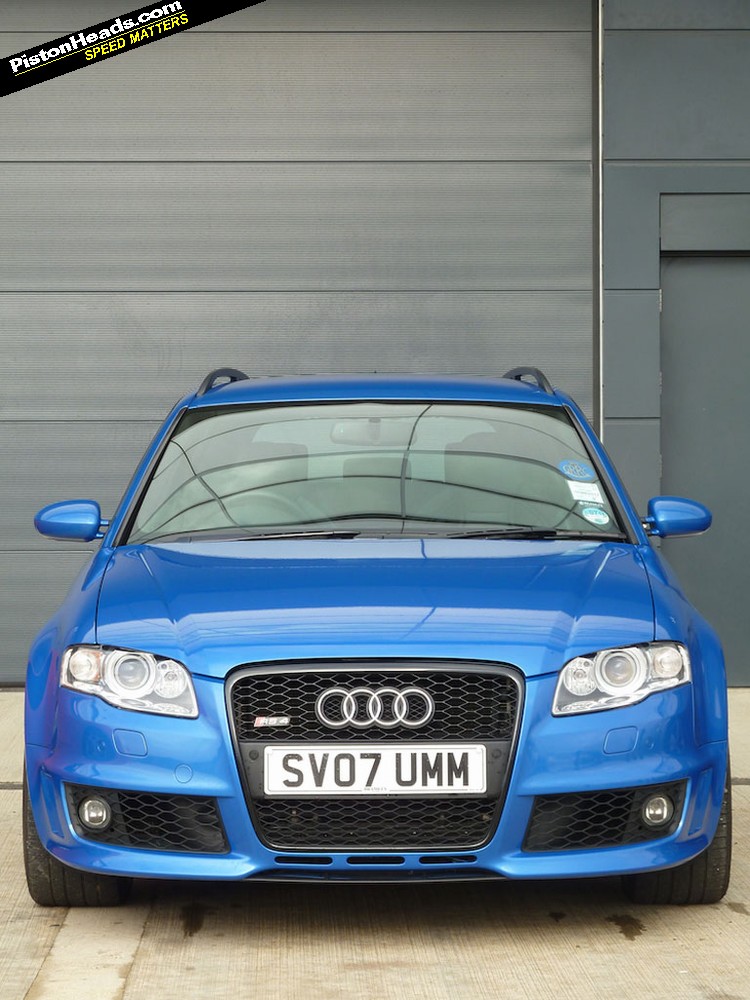Audi RS4 (B7) | PH Heroes
Still one of the very best excuses for spending £20k on a practical fast car...

The B7 generation RS4 has been on the PH Heroes’ hit list for some time now. We actually meant to do it in the aftermath of a winter-themed twin test we shot back in 2019 - but the photo shoot on the Pennines was so acutely Siberian that we had to abandon the idea. (How Siberian? Well, suffice it to say we had to ditch the R34 Skyline at the hotel after it failed to start on the second morning.) It seemed a shame at the time, but now I’m glad we threw the towel in when we did; the constant threat of black ice meant there was a lot of half-mast, safety-first driving going on - and the RS4 deserves much more than that.
Granted, you hardly need to be told that the B7 is a legitimate hero. The jury has been out for a good while. When new it occasionally suffered in back-to-back comparisons with the E90 M3, yet it was also widely feted at the time for being the sort of driver’s car that Audi hadn’t produced since it stopped trying to win rally championships. It wasn’t the first RS4, of course, and it helped that the B5 (and RS2 before it) had well-established the blueprint by 2006 - nonetheless, its predecessors were arguably cult classics, built with third-party assistance from Porsche and Cosworth. The B7 - offered as a saloon and convertible, as well, let’s not forget - and developed in the wake of the C5 RS6 by an increasingly confident quattro GmbH, was intended to crack the mainstream.
It had all the right constituent parts. For one thing, it looked terrific. The B5 and C5 had both been appealing, but the B7 took Audi’s subtle-yet-sharp styling language to somewhere truly timeless. Iconic status sometimes leaves a car with too much to do in the flesh; not here - it’s quite possible that the isn’t a line out of place. As ever, it helps that for the most part form follows function (the RS4's modified track is 37mm wider at the front, 47mm at the back) and that the underlying B7 proportions are already pitch-perfect - but clearly Audi succumbed to none of the theatrical impulses it now indulges. Blistered and brilliant in grey, the RS4 is all business. It's what's underneath that counts.
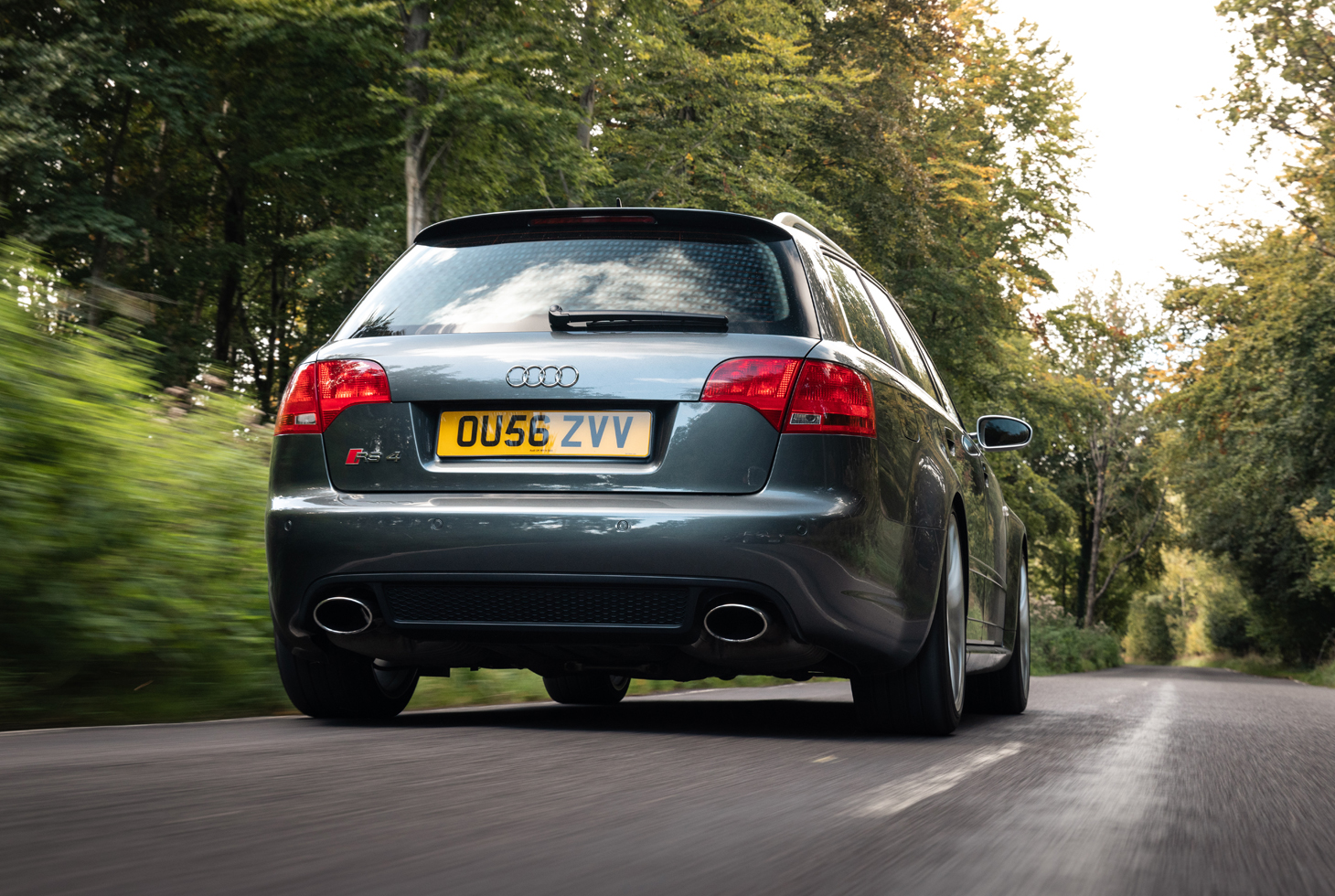
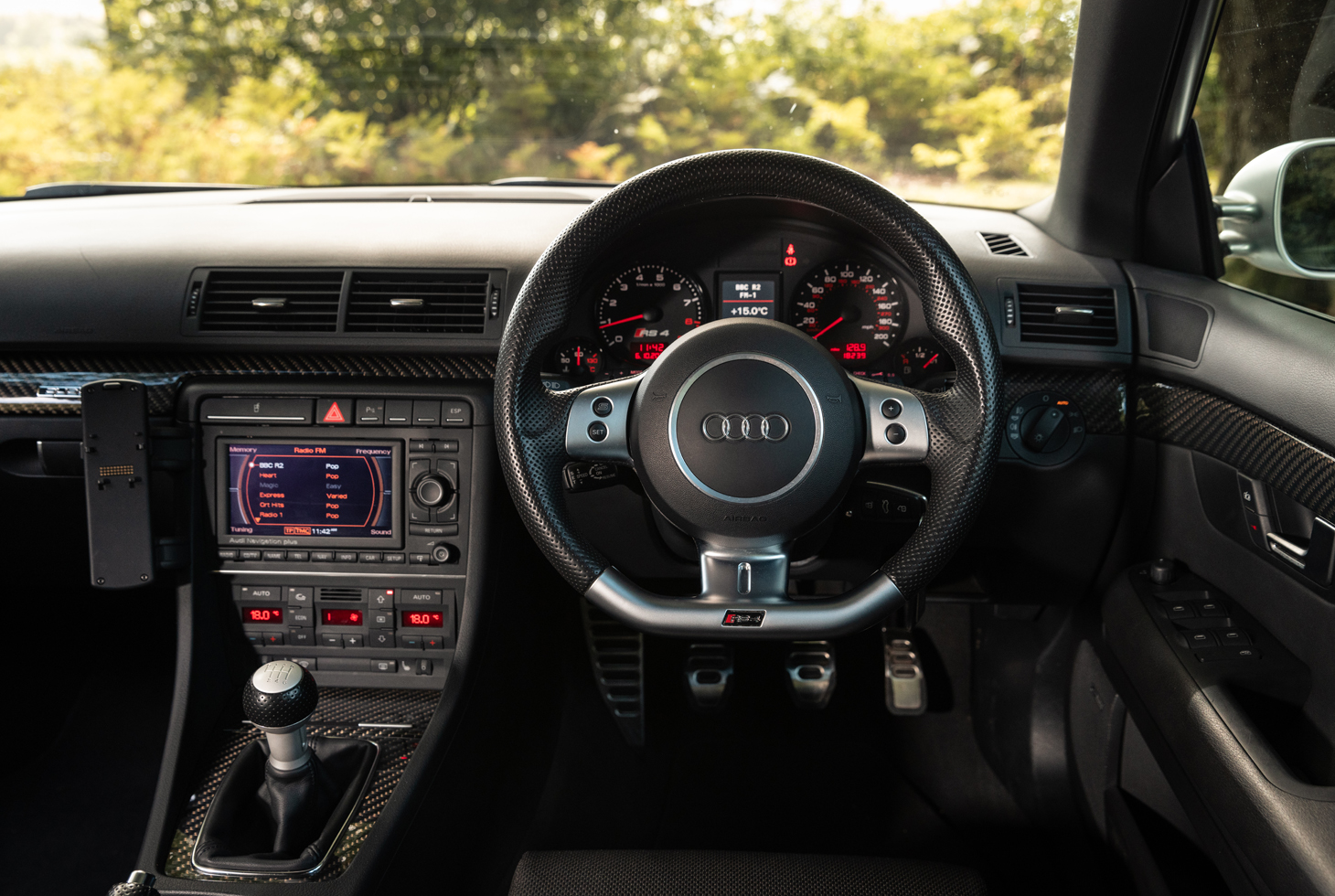
Nothing about the interior serves to undo the good vibes. Obviously, the infotainment now dates it horribly, and the ugly phone charger attachment in Audi’s heritage car does it no aesthetic favours. Even for someone predisposed to appreciate switchgear, the dual-zone climate control has sufficient buttons to coax a cruise missile into flight. But analogue dials with 8,000rpm in red and 200mph in white crank up the feel-good-o-meter up a notch, as do the wingback sport seats and scalloped steering wheel. And that’s before you’ve turned the key in the ignition, thumbed the starter button, and flooded the cabin with actual good vibrations.
In point of fact, the V8’s red-ringed button’s half-forgotten position adjacent to the hand brake is initially a source of mild frustration because it takes two hands to start the RS4. In retrospect though, the heavily reworked naturally aspirated 4.2-litre motor it's attached to well earns the tiny moment of additional consideration. Perhaps we’ve just been denied this sort of petrol unit for too long, but ’START ENGINE’ in the B7 really does begin to feel like a curtain raiser roughly equivalent to ‘In a Galaxy Far Far Away’.
Not that there are any histrionics to speak of. The V8 doesn’t snarl or spit; it burrs at you, and via old-school structural resonance, makes a sonorous womb of the otherwise solemn cabin. When cold, it can seem mildly disgruntled. The instrument cluster display warns you of a 7,000rpm max (imagine!) and indelicacy with the middleweight clutch will likely see you stall. Indelicacy with the throttle at the same time might just have you pogoing away from a standstill like an overzealous learner.
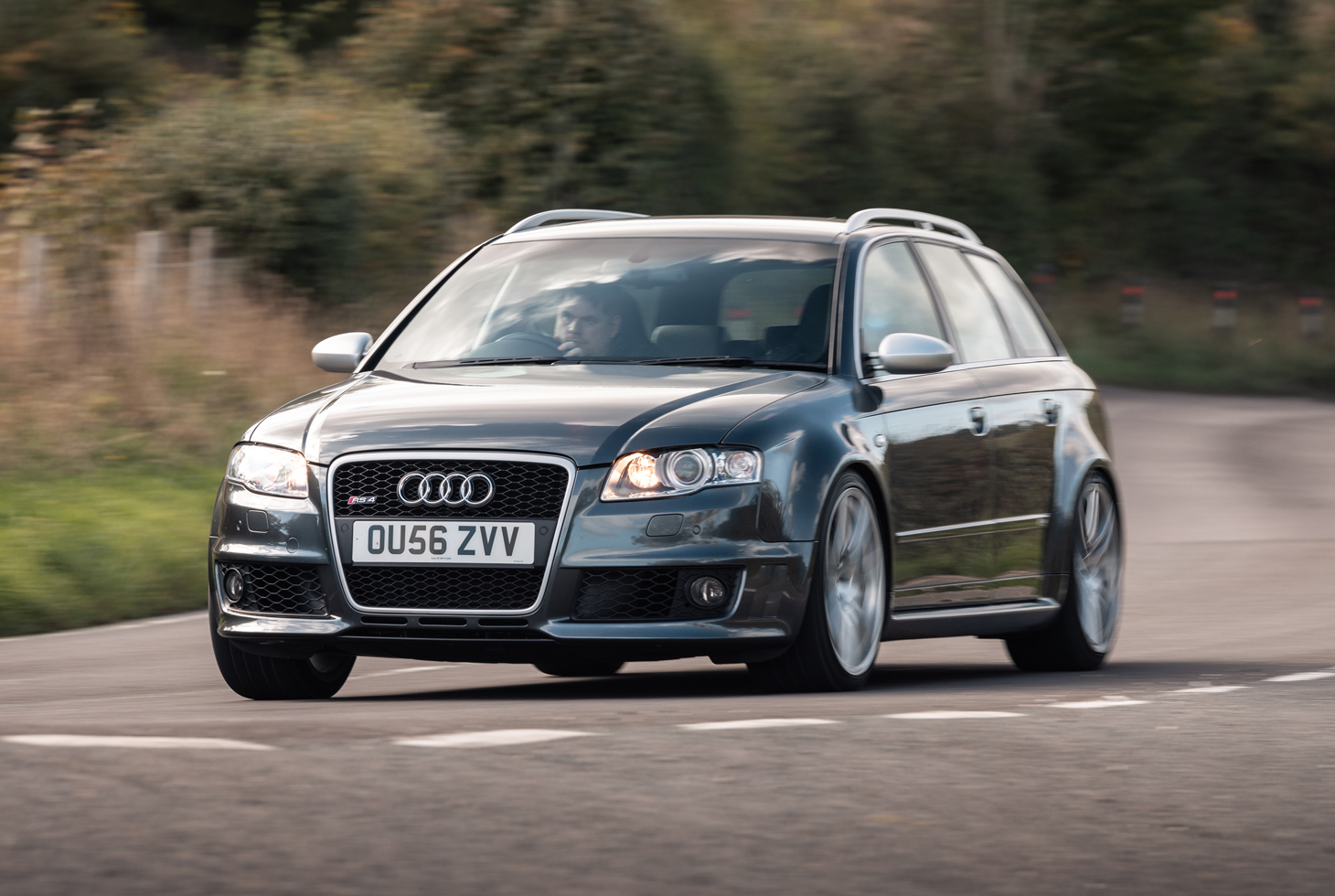
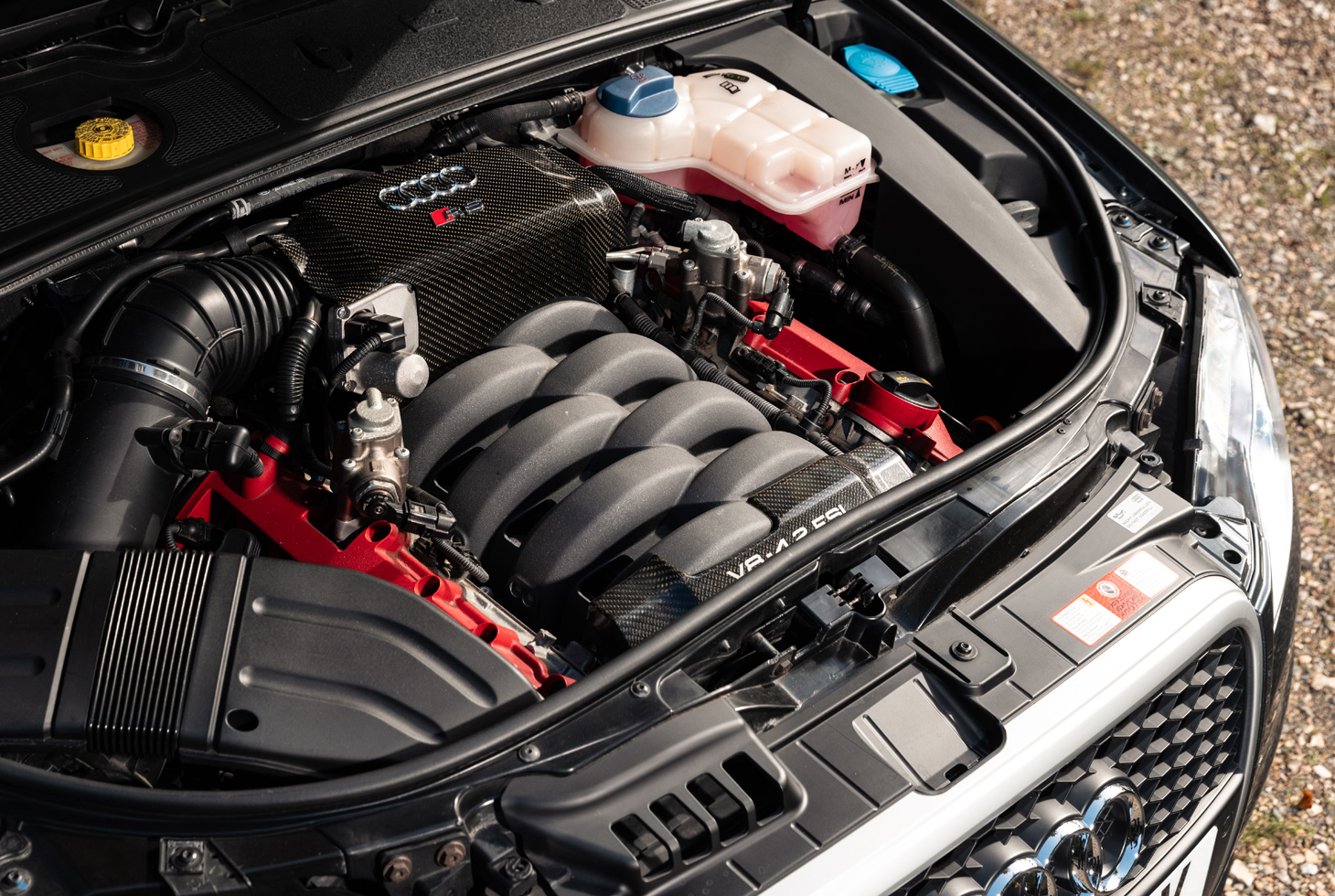
But the intransigence doesn’t last long. Indeed, the feeling that the engine needs to limber up while oil reaches its nether regions is welcome. Unlike so many modern-day equivalents, it conjures up a mental link to crotchety V8 heroes of time past, and while it would be wrong to overstate its simplicity - this is, after all, a 100hp-per-litre, variable valve timed and direct-injected petrol motor from 2006, not 1986 - there’s no denying that the requirement for genuine mechanical sympathy seems like a generation removed from anything current.
Unless you’ve a heart made of stone, chances are you’ll abide by the warm-up routine. It’s simply too much of a pleasure to work that burr into a heavy-duty purr. Just as it's too much of a pleasure interacting with the clean-revving V8, full stop. Were you told it needed a blood transfusion, you’d probably consider it. There are plenty of reasons for this - not least what happens when you ditch the kit gloves and turn all that lovely resonance into something more expressive beyond 6,000rpm - but two surface almost immediately: the throttle response, and, somewhat inevitably, the romance of a manual transmission.
The advent and rapid evolution of turbocharged engines has inoculated most of us against mediocre examples of the former. Cars have been decoding what your foot has been doing with the accelerator pedal for decades, of course, but forced induction - no matter how sophisticated or pre-wound - is always going to be an impediment to unfettered throttle response. Consequently, while the B7 does not seem quite as bullish as the turbocharged B5 at low revs, what it loses in accessibility it makes up for in crispness of control. Driven today, the sense of connection with even minor changes in engine speed is a thing of wonder, and the deeper you get into the V8's power delivery, the better it gets. And because it rewards meticulous input, you pay it the compliment of meticulous attention.
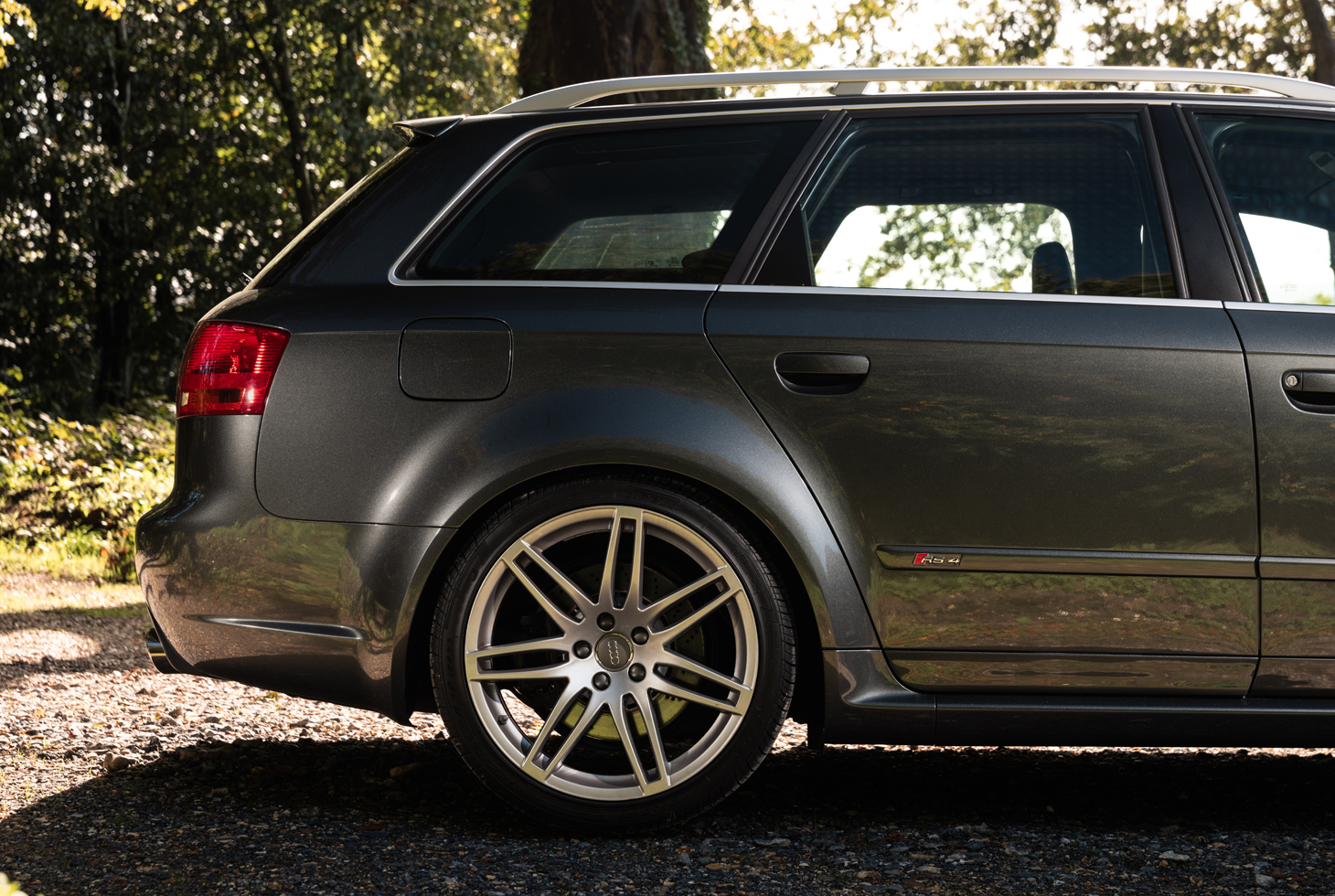
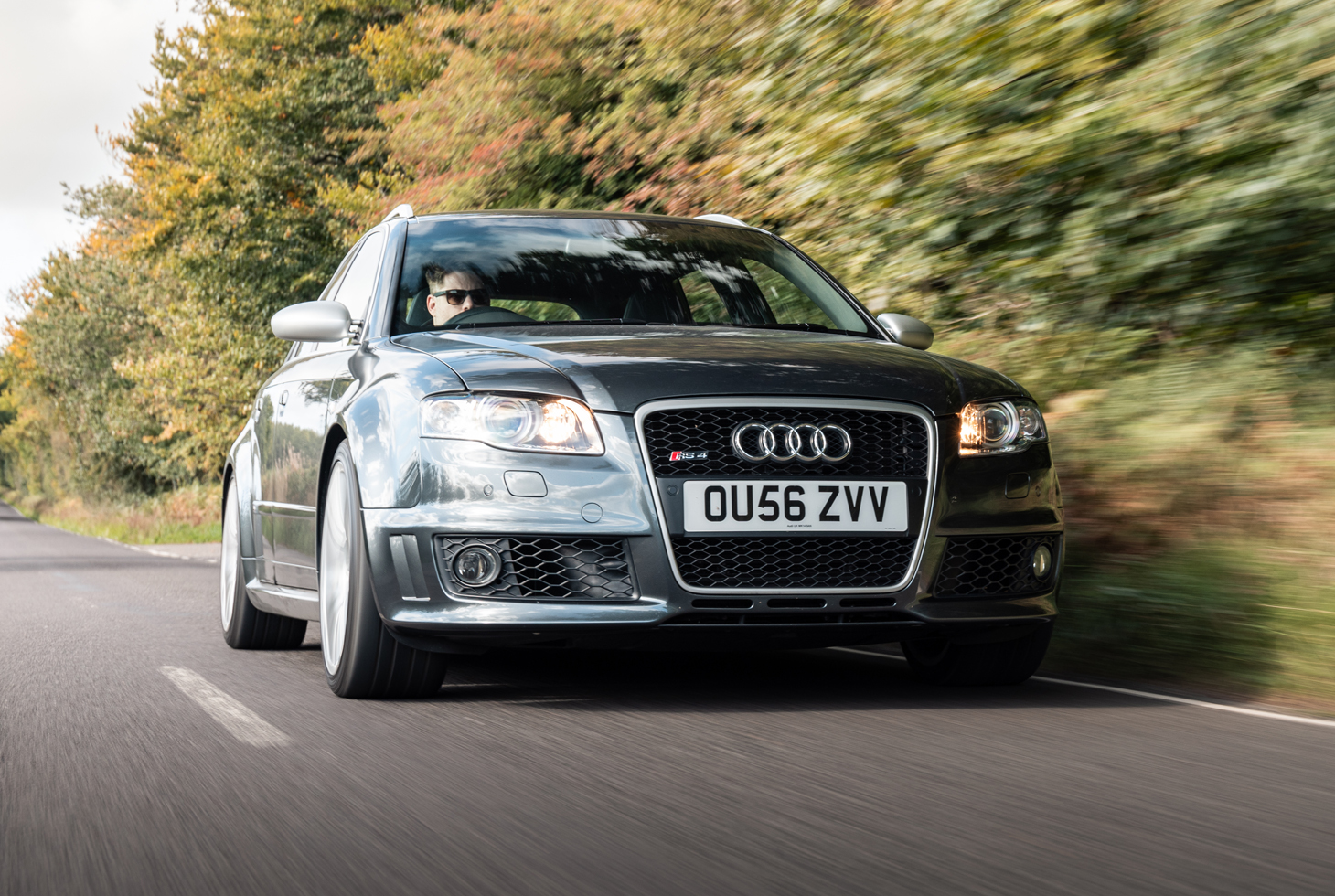
A clutch pedal only adds to the drama. Audi has obviously become synonymous with dual-clutch transmissions in subsequent years, and while no one is particularly clamouring for the clock to be turned back in fast wagons, it’s hard to overstate the pleasure of choosing a ratio the old-fashioned way when there’s a V8 at the end of the biting point. Not only do you get to choose precisely when you change gear, you also get to choose how you do it. Because while there’s always the temptation to exchange cogs in a go-faster blur right on 7,800rpm, there’s also something to be said for slowing the process right down, like a Bond villain opening a communique. There is goodness and meaning in both, even if the Getrag-made manual isn’t anything special in the grand scheme of things. It’s just wonderful to have the luxury of choice, and along with it the endless satisfaction of physically interacting with the engine.
It’s all so captivating that for a long time the rest of the RS4 disappears behind the V8’s shadow. The impression that something hefty and timeworn and wonderful is occurring just ahead of you is engrossing to the point of infatuation. Of course, if you open the bonnet to admire the source of all this euphoria, you’ll be reminded that the motor is actually quite a long way ahead of you. With eyes now accustomed to seeing smaller engines mounted as far back in the chassis as possible, it’s bewildering to see a larger one lodged so close to the bonnet catch. Audi had famously accounted for this when it came time to nail the car's drivetrain and handling, but it’s safe to say - certainly in a modern context - that the RS4 is nose led despite the best efforts of its rear-minded Torsen centre diff.
It is not necessarily a paragon of virtue when it comes to hydraulic power steering either. Every now and again, the wheel offers resistance when there should be none - and doesn’t busy itself with doing much of anything around the straight ahead. Does this matter? Well, maybe back in the day you’d be inclined to point out the distance between it and some stellar rear-driven competition, but we’ve lived through the intervening years between then and now, and frankly, in 2022, by virtue of its size, soundtrack, comparative straightforwardness and obliging sense of poise, the RS4 seems like a breath of fresh air even allowing for the fact that the back bumper of a well-driven RS3 might ultimately get away from you.
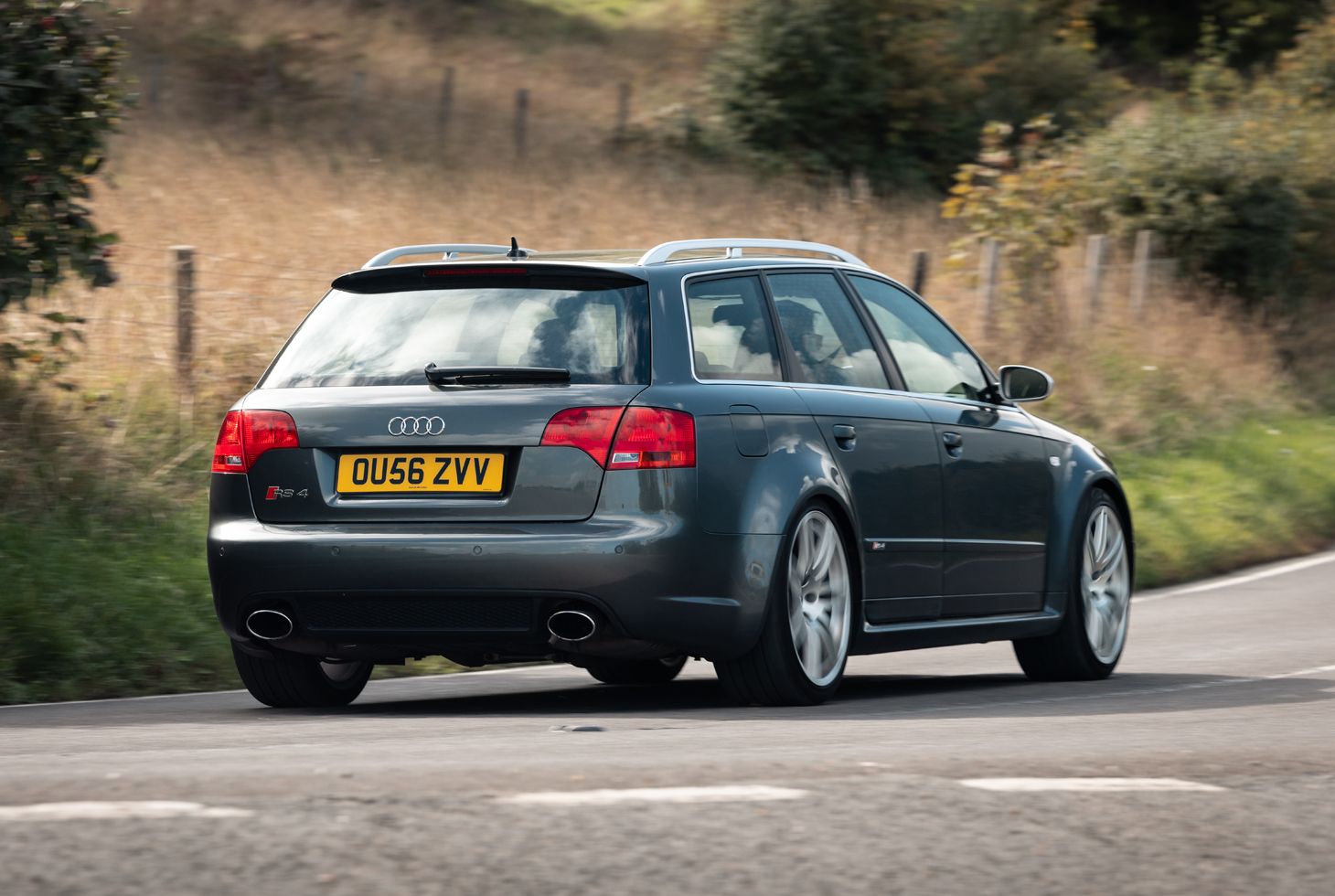
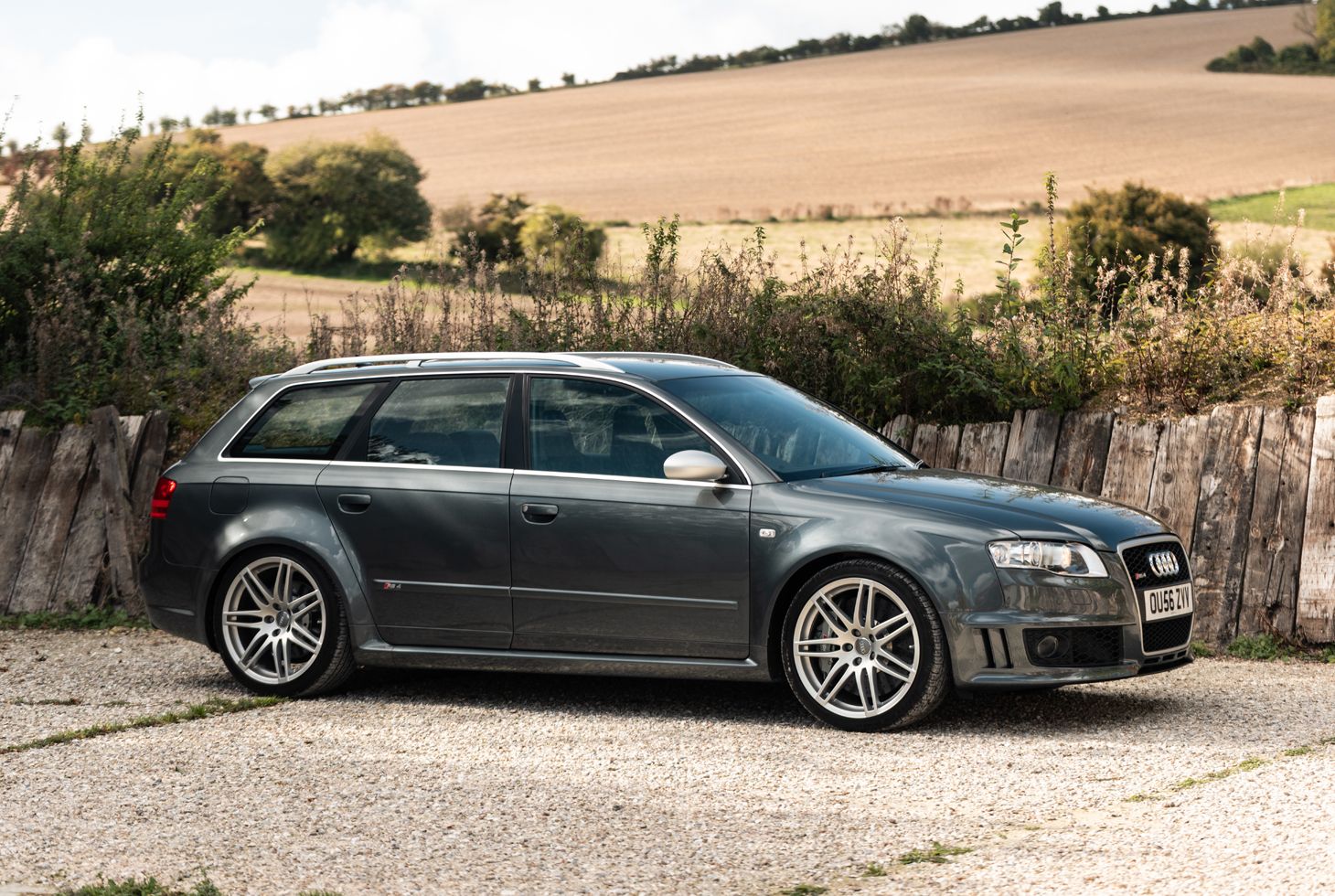
In fact, the B7 is a very fine reminder that qualitative statements such as that one couldn’t possibly matter less. There’s just too much here to like - and much of it has nothing to do with outright speed. For one thing, the RS4 rides engagingly well for something at the summit of a noughties’ Audi lineup, and sitting 30mm lower than standard. Not with the outright sophistication of something more up-to-date, needless to say, but it isn’t so hunkered down that it's jarring. Aside from the occasional shudder that suggests a somewhat less rigid platform than we're now treated to, the B7's bespoke suspension and adaptive damping do a fine job of taking everything in their stride.
Almost certainly that’s because its designer made composure and ease of use a developmental priority. Audi probably didn’t feel it needed the RS4 to convince a new generation of quattro buyers with overly aggressive intent - by 2006 it had the first generation R8 to do that. Despite costing £50k when £50k actually meant something, a very handsome wagon (and saloon and cabriolet) with a very similar engine to its pioneering sports car could be trusted to win over customers on its own merits, and the B7 absolutely succeeded on that front. It could blithely cross continents, just as it could (and indeed can) be driven with the carefree abandon of a 420hp hot hatch, thanks to its abundantly high grip and the handy extra bit of edge afforded by pushing the ’S’ button on the steering wheel.
But there’s absolutely no need to do that if you’re just looking for a good time. Unlike so many modern equivalents - the current RS4 chief among them, sadly - the B7 feels special all the time. It honestly seems like a treat to drive it anywhere, for any mundane purpose, at any speed. Clearly, there’s the wistful, joy-giving persona of the engine and gearbox baked into that opinion, though it wouldn’t be half the treat it is were they not twinned with a car that makes the most of their presence. Alongside early iterations of the RS6, the B7 duly cemented its maker’s wider reputation as the industry benchmark for fast, all-weather estate cars, providing Ingolstadt with a performance legacy distinct from its rallying heritage. Audi has built much quicker and more sophisticated RS models since then, of course, although it’s telling that the RS4 from 17 years ago could still be said to provide the high watermark for everything that epitomises the much-copied recipe. A hero since day one, then - and for all time, too.
SPECIFICATION | AUDI RS4 (B7)
Engine: 4,163cc, V8, naturally aspirated
Transmission: 6-speed manual, four-wheel drive
Power (hp): 420 @ 7,800rpm
Torque (lb ft): 317 @ 5,500rpm
0-60mph: 4.8sec
Top speed: 155mph
Weight: 1,785kg
MPG: N/A
CO2: N/A
On sale: 2006-2008
Price new: £49,985
Price now: £15,000-£30,000

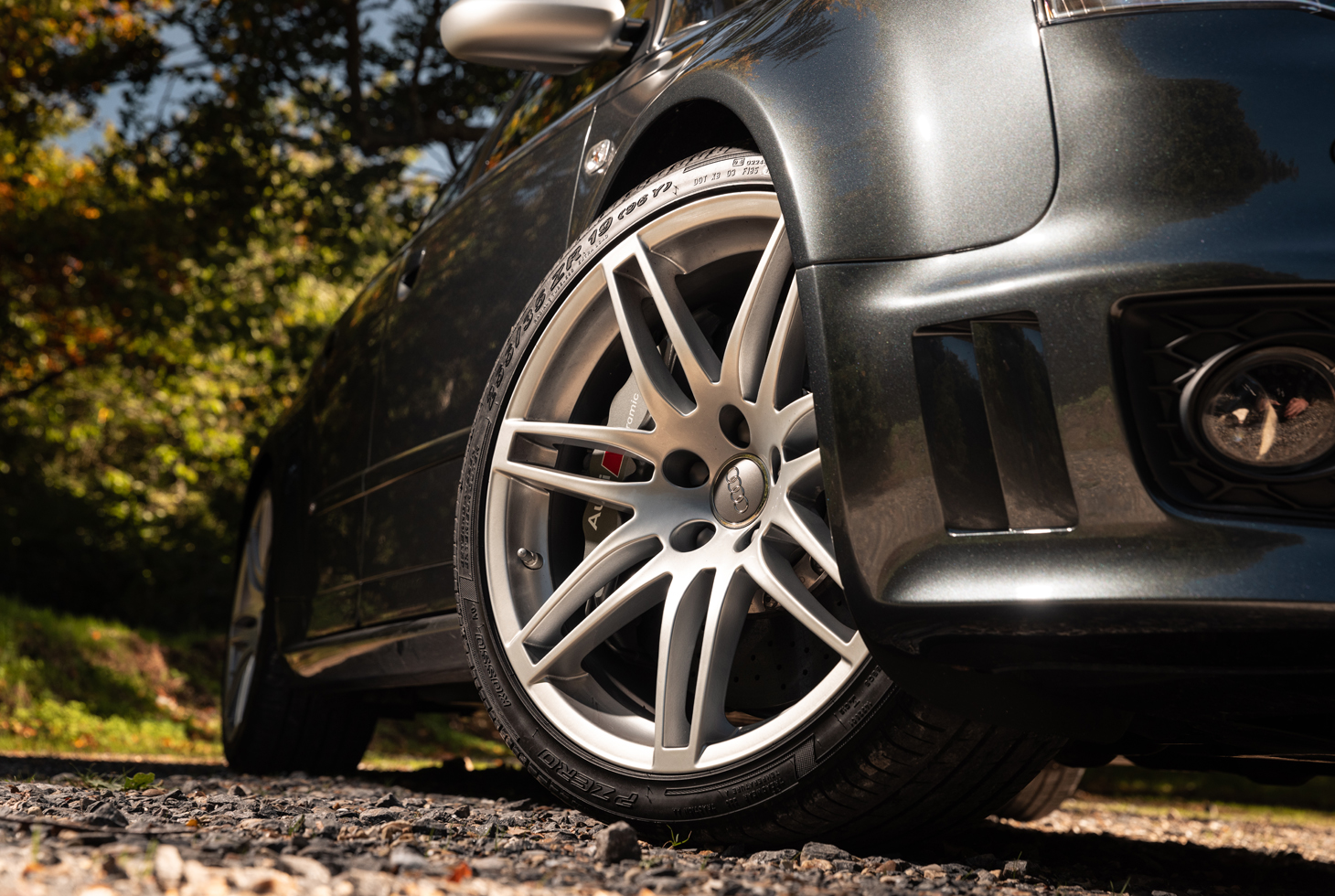
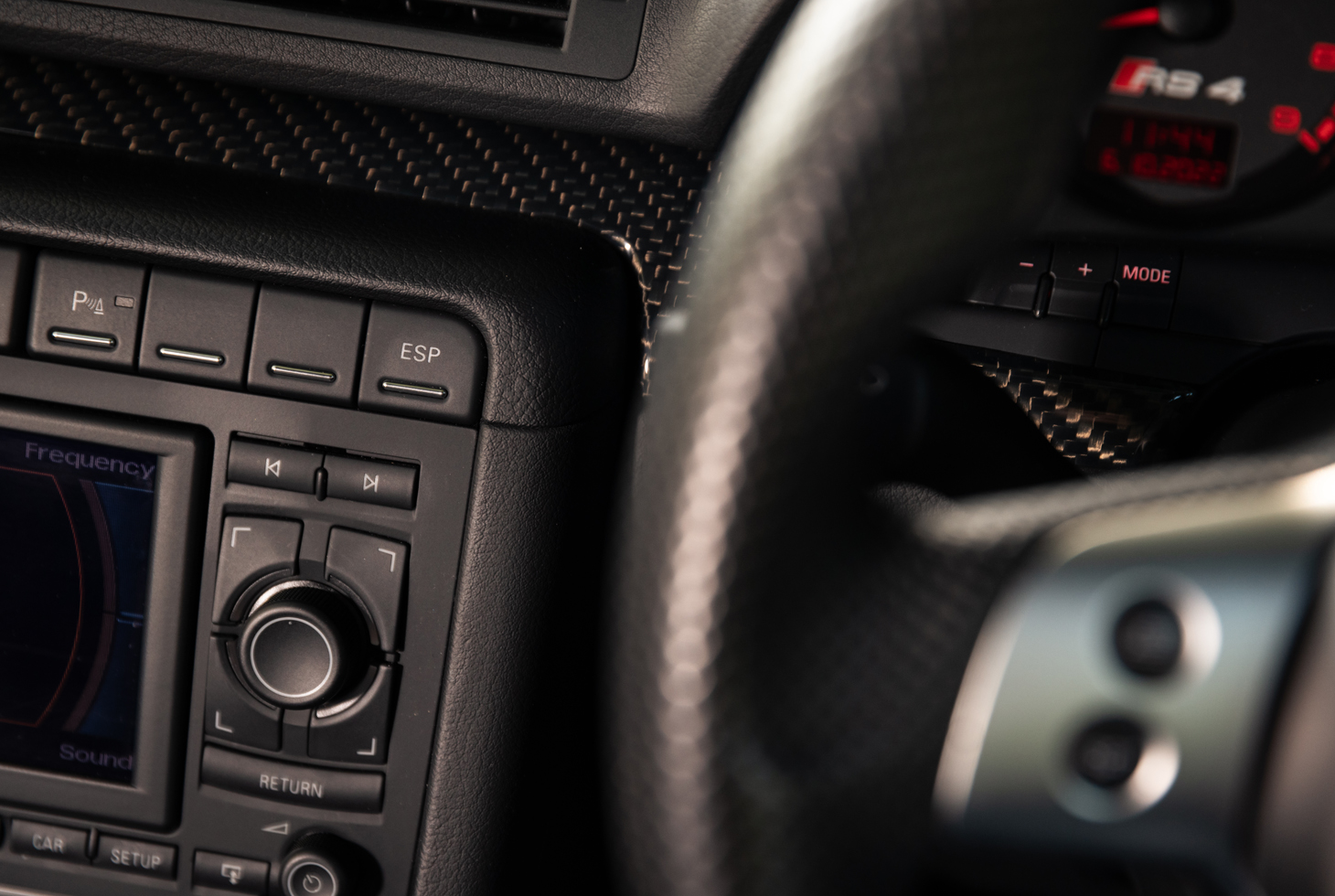
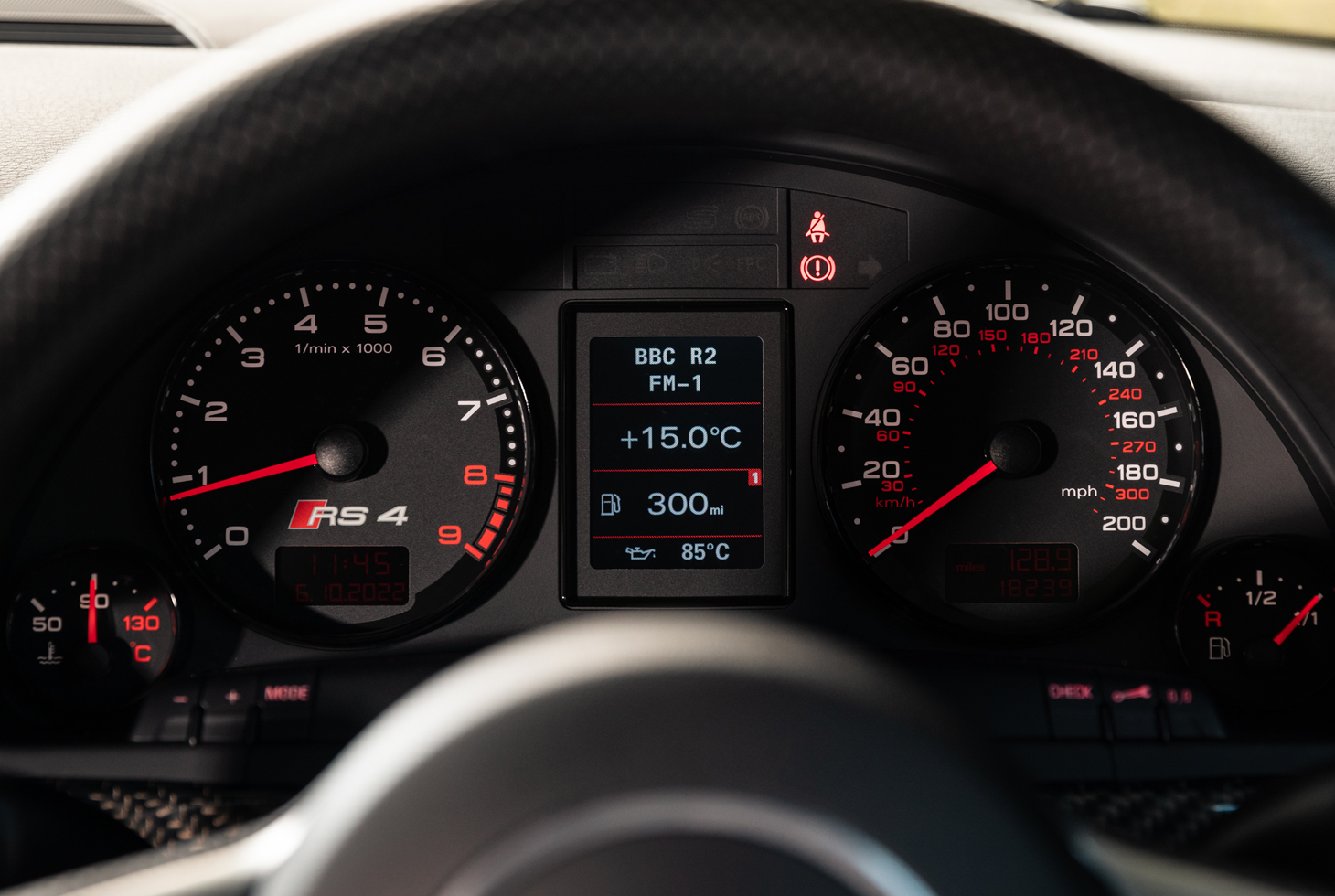
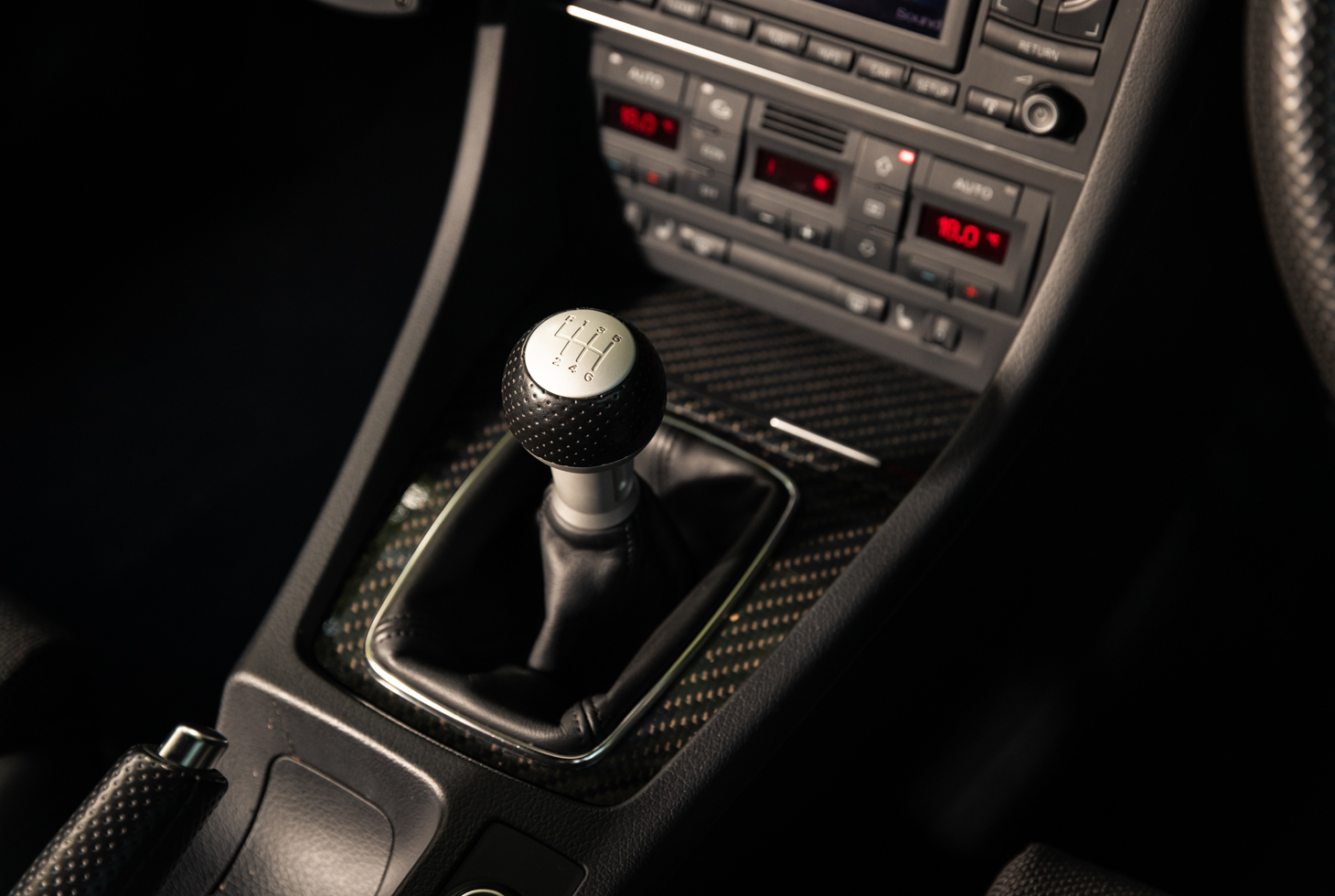
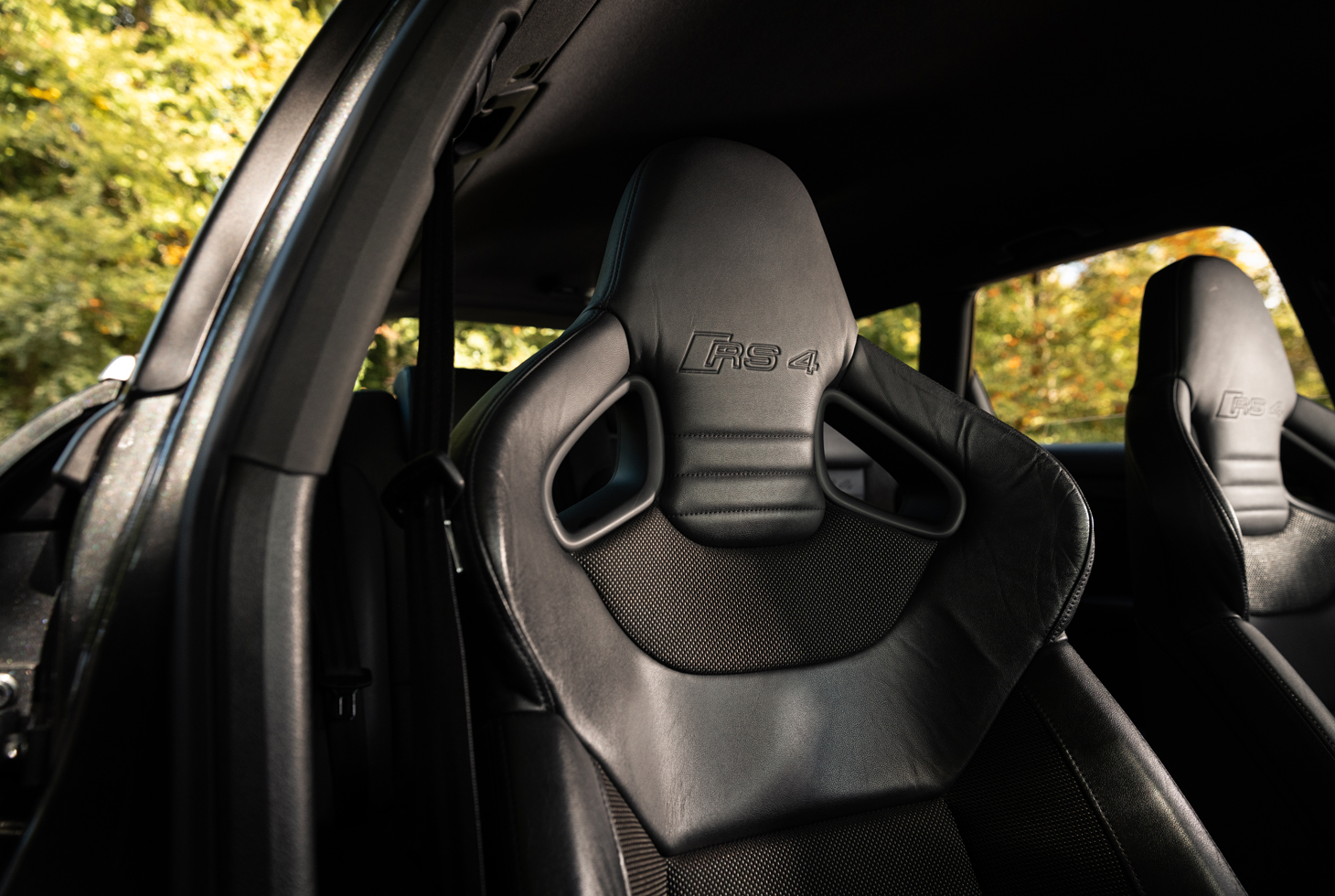
Never driven one but will accept they are by far the most enthusiastic handlers.
Had the se version of the saloon at the time and had much want for this but as soon as the new shape came out I thought this looked too pinched and prominent at the front end. Also never liked the tail lights of this facelift.
What a good car though, although the next 170k miles were completed in a GTR, which was close to faultless in every way.
50k new Audi 2007 versus 64k new Nissan 2014; absolutely no comparison**
Fun times back then at fun prices!!!
- so good in fact that if anyone has a late model year Nismo for sale, please get in touch!!
Bought my second car below at the start of last year from a RS246 forum owner who bought it off another long-standing owner and it had the sort of money lavished on it only B7 owners can understand why. Fully stage 2 remapped and the precats cored out has solved the B7: slightly flat torque delivery and gives it the sort of mid range punch the B5 had, full carbon clean has ensured all the horses are still delivered without problem and a combination of bilstein fast road suspension, upgraded RS5 wheels on spacers has given it even more limpet mine grip on B roads and removed the DRC issue. Lots of other upgrades, ceramic coated paint makes it feel as fresh as my factory car did and at 15 years old and now 98k miles it still feels like it’s a panzer tank compared to newer audis without a single squeak or rattle in the cabin.
Infotainment was upgraded to a pioneer unit with apple car play and android auto which solves that problem and sounds better than the original so an easy fix.
I still daily drive it, and on Dorset and Somerset B roads that are narrow it feels golf sized compared to newer cars so you can fully exploit the entire of its capability and it’s easily fast enough to harass a new RS3 on real world roads.
I paid 22k for the car privately - probably had 20 plus k of upgrades on it, going in for a service and MOT this month with only jobs needing doing are a replacement rear subframe and rear brake lines so couple of K. Beyond that it hasn’t let me down once. Running on Michelin PS4S it’s wet weather and winter traction betters most cars on winters.
Honestly it’s probably my favourite all round do everything car, it has to share garage space with my Ferrari F12 and yet 9/10 drives I prefer to go for a hoon in the RS4, and for 22k I honestly don’t know another car I would enjoy more. The noise is nascar filthy even with stock exhaust, and the speed the V8 spins to the redline is a match for its Italian sister, and a NA V8 with a manual box is still one of those old school driving pleasures that never gets old.
Some caveats - the carbon issue is because you have to rev this engine out and get it at full temperature to keep the carbon burned off, anyone who drives it round town and not wringing it’s neck regularly will clog it up.
They are the age where you have to forget about the concept of economic value to repair things and accept it’s a dying breed of car that is worth maintaining even if it doesn’t make financial sense. It’s not something you can really shed on budget, although they still cost less to run than the depreciation on the new RS4.
Be prepared for the fuel bills, she’ll happily do 30 mpg if you tread lightly but explore the redline (which you will) and expect 16 mpg average on super unleaded, and a litre of oil every 1k miles.






As for the car, absolutely gorgeous and will always remember clarkson racing that free climber. I’d have one in my stable in a heartbeat if my numbers came up over any of the newer ones
However, once the V8 novelty wore off, and it will, it just started to grate for a few minor reasons.
There really is frig all room in the back, forget child seats.
The fuel economy is laughable, even just taking it easy.
The lack of low down torque became tiresome.
Still, gorgeous though, I do miss it

Gassing Station | General Gassing | Top of Page | What's New | My Stuff











